Johann Sebastian Bach (1685–1750)
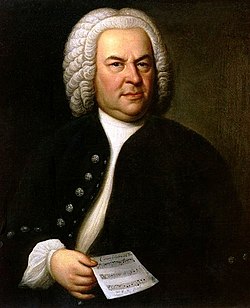
Bach was a composer of the Baroque period. He was taught to play the violin and the harpsichord by father. His brother exposed him to contemporary music and he taught him the clavichord.
He composed mostly organ works such as preludes, fantasias, and toccatas. between 1708 and 1714 he composed several preludes and fugues, which showed a range of compositional techniques in the creation of chorale tunes. His work includes the works of many French and Italian composers.
Music samples:
Bach's Prelude No.1 in C major - https://www.youtube.com/watch?v=0KQW2YnCUrE
Wolfgang Amadeus Mozart (1756–1791)
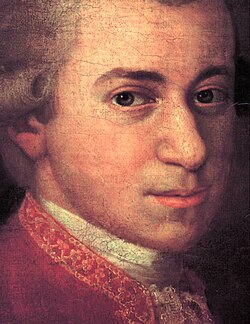
Mozart was known as a composer of the classical period. At the age of five he was already competent in violin and keyboard so he started composing and was acclaimed as a prodigy.
He composed over 600 works, which include among others symphonies, concertos, and operas. He developed and popularized the Classical piano concerto. he also wrote many dances. He met several composers during his travels, which influenced his music.
Music samples:
Mozart's Symphony No. 40 - https://www.youtube.com/watch?v=JTc1mDieQI8
Mozart's Overture to Don Giovanni - https://www.youtube.com/watch?v=jyjVCbTo5F0
Joseph Haydn (1732–1809)

Haydn was a well known composer of the Classical period. He left his family when he was six years old to train as a musician. He was mostly trained by his schoolmaster and choirmaster. He learned the violin and harpsichord from his schoolmaster.
He wrote sonatas mostly but his music differed from other composers such as Mozart and Beethoven due to the humor he included in his work. A famous example is the loud chord in the slow movement of his symphony Surprise. Between the late 1760s and early 1770s, his style evolved to what was know has "Sturm und Drang" ("storm and stress"). Later on, he returned to a lighter style. In the 1790's his developed a style known as his "popular style" in which he frequently used folk material.
Music samples:
Haydn's Surprise symphony - https://www.youtube.com/watch?v=eVXalu0p1wo
Haydn's Farewell symphony - https://www.youtube.com/watch?v=Lm_OLznua6g
Ludwig van Beethoven (1770–1827)
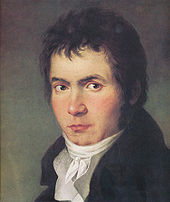
Beethoven was mainly known for composing Classical and Romantic music. He was first taught music by his father. He was taught the piano by a family friend and he was instructed in playing the violin and viola by a relative. His most important music instructor was Christian Gottlob Neefe taught him composition.
Between 1798 and 1800 he composed his first and second symphonies, which made him one of the most important young composers of his generation after Mozart and Haydn. He also composed piano sonatas among which the Pathétique sonata was well received. In 1799 he wrote his Septet, which was one of his most popular compositions while he was still alive. He influenced composers Franz Schubert and Robert Schumann.
Music samples:
Beethoven's Septet - https://www.youtube.com/watch?v=jmex-7V0IRI
Beethoven's 5th Symphony in C Major - https://www.youtube.com/watch?v=fOk8Tm815lE
Robert Schumann (1810–1856)

Schumann was a composer of the Romantic era. He started composing before the age of seven and he was instructed in music and piano by a teacher. He pursued a musical career even though he had started to study law earlier.
Between 1835 and 1839 he wrote several piano pieces that were very well received. In 1834 he composed Carnaval Op. 9, which was one of his most characteristic piano works. He wrote the "Träumerei" in F major, No. 7, which was another famous piano piece.
Music samples:
Schumann - Kreisleriana Op.16 - https://www.youtube.com/watch?v=zh1fWkarr4I
References and pictures:
http://en.wikipedia.org/wiki/History_of_Germany
http://en.wikipedia.org/wiki/Germany#Music
http://en.wikipedia.org/wiki/Ludwig_van_Beethoven
http://en.wikipedia.org/wiki/Johann_Sebastian_Bach
http://en.wikipedia.org/wiki/Joseph_Haydn
http://en.wikipedia.org/wiki/Wolfgang_Amadeus_Mozart
http://en.wikipedia.org/wiki/Robert_Schumann
DANCE:
The Waltz
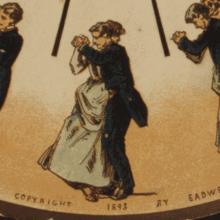
In the 18th century, the Waltz was widely spread in Germany. It was a ballroom dance for couples, which originated from regional social dances of southern Germany and Austria , such as the Dreher, Ländler, and Deutscher. Some of its characteristics were expressiveness, passion, and freedom, which were abstract values of the Romantic period. The early 19th century also welcomed the Viennese Waltz.
Video - Demonstration of the Waltz - http://upload.wikimedia.org/wikipedia/commons/transcoded/b/b6/Waltz.oggtheora.ogv/Waltz.oggtheora.ogv.480p.webm
Ballet

Between 1760 and 1767 Germany was a significant centre for Ballet but it was not until the 20th century that it was frequently used in German theatrical dance. The Stuttgart Ballet was the first major ballet company in Germany but was not well-known until the 1960s.
The Ländler

The Ländler is a folk dance for couples that is characterized by hoping and stamping. It was popularized late in the 18th century. It is a dance that does not require professional training because it can be learned by observing folk dancers. It is thought to have contributed to the evolution of the Waltz.
Video - Demonstration of the Ländler - https://www.youtube.com/watch?v=URdMerZQPyc
The German Dance
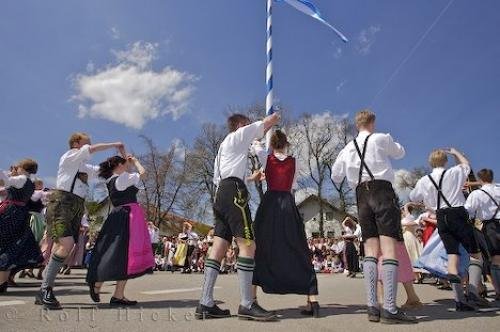
The German Dance which was popular in the 18th century originated in the lower classes. It is much livelier that the Minuet and it has some elements similar to the Waltz. Due to the constant spinning, dancers often experience dizziness.
Video - Demonstration of the German Dance - https://www.youtube.com/watch?v=ddy4LJCC7bk
References:
http://www.britannica.com/EBchecked/topic/231186/Germany/58070/Music-and-dance
http://en.wikipedia.org/wiki/Viennese_Waltz
http://en.wikipedia.org/wiki/Mozart_and_dance
Pictures:
http://upload.wikimedia.org/wikipedia/commons/thumb/d/d3/Phenakistoscope_3g07690d.gif/220px-Phenakistoscope_3g07690d.gif
http://www.stuttgart-ballet.de/
http://www.scn.org/enzian/images/dirndlradl.jpg
http://www.hickerphoto.com/images/500/cultural-german-dance_9883.jpg
THEATRE:
Playhouse Wilhelmsbad owns its existence to Prince Wilhelm of Hesse-Kassel.
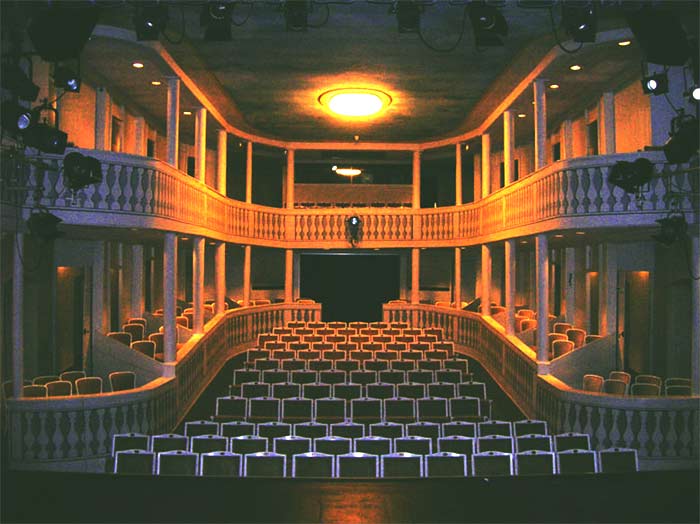
Meiningen Museums Theatre Museum - built under the orders of Georg II, Duke of Saxe-Meiningen.
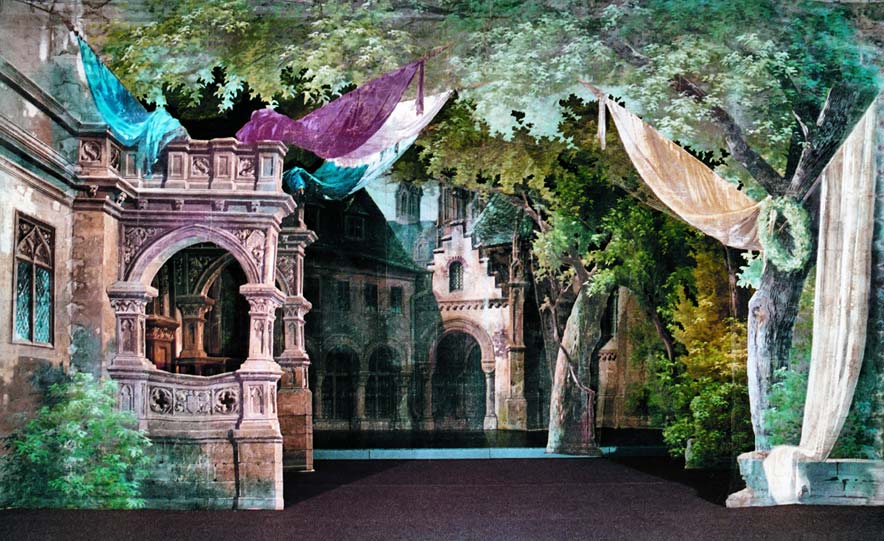
From the 18th and 19th centuries, there was rivalry between sovereigns, which led to the building of magnificent theaters. German theater was considered the finest in Europe, and by 1836, there existed over 50 permanent theaters in Germany. Domestic melodrama, which was fictional work, was valued in theater and it pictured the daily life with characters suffering with unexpected difficulties.
During the 19th century, it was the trend to use costumes and settings to represent History accurately. Architecture in theatre was revolutionized and German Romanticism was introduced as a new theatrical form. German writers of theatrical pieces were mainly influenced by the visual arts and the 19th-century philosophy. They were also inspired by the Teutons' history, which tells the life of the Teutons, a German tribe that existed in the late second century BC. In their writings, German writers showed a great sense of nationalism. Some well-known writers who influenced the expansion of theater were Gotthold Ephraim Lessing, Johann Wolfgang von Goethe, and Friedrich Schiller among others.
Later in the 19th century, a major theatrical company that stood out was the Meiningen Ensemble. This Ensemble's productions were recognized as the most historically accurate. The Meiningen Ensemble belonged to Georg II, Duke of Saxe-Meiningen and it was conducted by director Ludwig Chronegk.
References:
http://www.research-in-germany.de/dachportal/en/Discover-Germany/Culture-and-the-Arts/Theatre-in-Germany.html
http://en.wikipedia.org/wiki/History_of_theatre
http://en.wikipedia.org/wiki/Teutons
https://prezi.com/ndrn5quwaooi/19th-century-german-theatre-conditions/
Pictures:
http://www.perspectiv-online.org/pages/en/bull-german-route.php#
No comments:
Post a Comment